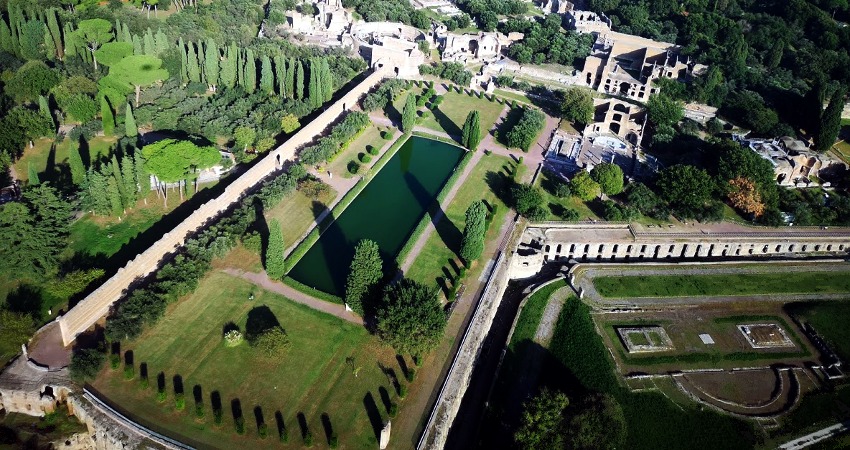Villa Adriana
The art of marble
Hadrian's travertine


Together with Villa d'Este, Villa Adriana (Hadrian's Villa) is one of the jewels of Tivoli. It was built for Hadrian, the cultivated emperor, and it contains pools, baths, fountains and classical Greek architecture among landscaped gardens, wilderness areas and farmland.
Notably, the buildings are made in travertine, the white limestone typical of Tivoli and the same material with which the Coliseum was covered and the dome of St Peter's Basilica still is.
Hadrian was Roman emperor from 117 to 138 AD, and it is during his reign that the villa was constructed. Hadrian loved the place so much that he moved to Tivoli around AD 128 and from then on he governed the empire from the villa. Other emperors seem to have used it after Hadrian's death: Antoninus Pius, Marcus Aurelius, Lucius Verus, Septimius Severus and Caracalla.
The monument contains over 30 buildings and the complex covers an area of about 250 acres (a square kilometre). Part of it still needs to be excavated. It is the greatest Roman example of an Alexandrian garden, recreating a sacred landscape.
You might want to visit the Canopus, a pool that recreates a resort near Alexandria and displays Corinthian columns as well as copies of famous Greek statues; or you might find it interesting to explore the Serapeum, an artificial grotto dedicated to the Egyptian god Serapis. You will notice that the Serapeum is covered by a dome (cupola): this is the object that made Hadrian exile, and later put to death, the famous architect Apollodorus of Damascus.
The emperor Hadrian loved architecture and used to sketch his own plans, trying to convince the architects that they were valuable artworks; he was so insistent, that Apollodorus once told him that he should have kept far from these activities, since the "pumpkins" he could draw (the domes) had nothing to do with architecture. Apollodorus marked his fate, and the Serapeum has a dome.
Villa Adriana is a UNESCO World Heritage Site.